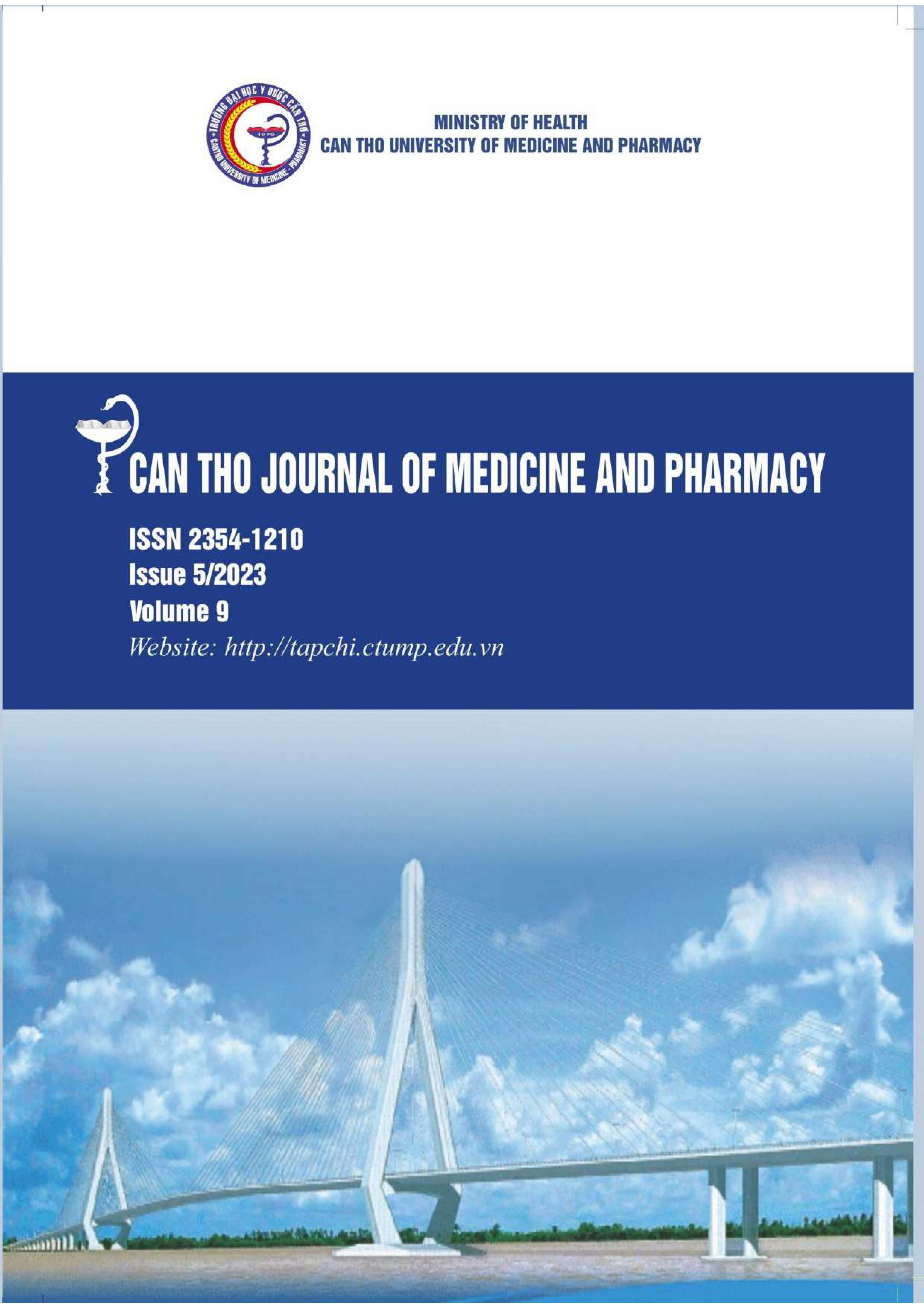FACTORS AFFECT ON THE TOTAL POLYSACCHARIDE CONTENT IN GANODERMA LUCIDUM (LEYSS EX.FR.) KARST, GANODERMATACEAE
Nội dung chính của bài viết
Tóm tắt
Background: Ganoderma lucidum is a precious remedy with the active ingredient polysaccharides effective in treating diseases such as diabetes, hepatitis, cancer, etc. During cultivation, factors such as harvest time, temperature, and humidity affect the obtained polysaccharide content. At the same time, in the extraction process, the polysaccharide content is also affected by the material/solvent ratio, extraction time, extraction temperature, and the number of repetitions of extraction. Objectives: To determine the growing conditions and the time of harvesting and extracting conditions of Ganoderma lucidum with the highest polysaccharide content. Materials and methods: Using phenol-sulfuric acid reagent (concentrated) to determine the polysaccharide content, the growth stage and extraction conditions leading to the most polysaccharide content. Results: The highest polysaccharide content was obtained in mushrooms on the 75th day, based on bagasse with growing environments from the 1st to the 34th day: temperature of 25-30⁰C and humidity of 60-70%; that from the 35th to the 67th day: temperature of 22-28 ⁰C and humidity of 80-90%; that from the 68th to the 75th day: temperature of 22-28⁰C and humidity of 60-70%. The best extraction conditions: medicinal/solvent ratio: 1/40, temperature: 80⁰C, time: 90 minutes, and the number of extractions: 3 times. Conclusion: Ganoderma lucidum should be grown, harvested, and extracted under the above conditions to obtain the highest polysaccharide content.
Chi tiết bài viết
Từ khóa
Ganoderma lucidum, polysaccharides, growing conditions, extraction conditions
Tài liệu tham khảo
2. Pawar A. Harshal, Priscilla M., et al. (2011), “Spectrophotometric estimation of total polysaccharides in Cassia tora gum”, Journal of Applied Pharmaceutical Science, 3, pp. 93-95.
3. Le Dinh Hoai Vu (2008), "Biological characteristics and yield of some strains of Reishi Mushrooms (Ganoderma lucidum) cultivated in Thua Thien Hue", Journal of Science, 49, pp. 209-216.
4. Le Duy Thang (2001), "Technology for cultivating edible mushrooms, Volume 1", Agricultural Publishing House.
5. Ministry of Health (2018), “Vietnam Pharmacopoeia V”, Hanoi.
6. Nguyen Thi Minh Tu (2009), “The process of extracting active ingredients from Ganoderma lucidum", Journal of Science and Technology, 47(1), pp. 45-53.
7. Askin Ruhan, Mitsuru Sasaki, Motonobu Goto (2007), “Sub-and supercritical fluid extraction of bioactive compound from Ganoderma Lucidum”, Proceeding of International of Symposium on Ecotobia Science, 7, pp. 575-577.
8. Sun Li-xin, Li Wei-Dong, et al. (2014), “Protection against lung cancer patient plasma-induced lymphocyte suppression by Ganoderma lucidum polysaccharides”, Cellular Physiology and Biochemistry, 33, pp. 289-299.
9. Tran Thi My Nhung (2012), "Comparison of yield and nutritional value of Reishi Mushrooms (Ganoderma lucidum) on two types of substrates (bagasse, sawdust)", Thesis of Master of Science in Biotechnology at Can Tho University.
10. Tran Tu Hieu (2003), "Photometric analysis", Vietnam National University Publishing House, Hanoi.
11. Matsunaga Yui, Wahyudono, et al. (2013), “Hydrothermal extraction and micronization of polysaccharides from Ganoderma lucidum in a one-step process”, Bioresources, 8 (1), pp. 461-471.
12. Chhaya Balu Varkhade, Harshal Ashok Pawar (2013), “Spectrophotometric estimation of total polysaccharides in Plantago ovate Husk Mucilage”, International Journal of Chemical and Pharmaceutical Analysis, 1 (1), pp 2-4.


